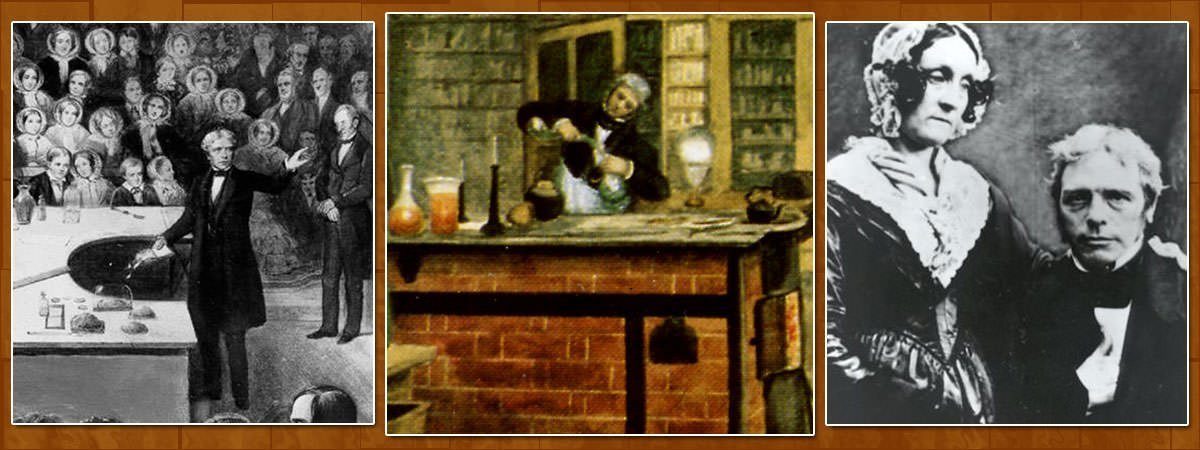Active in the nineteenth century, Michael Faraday was an English scientist who is most famous for his contribution to the fields of electromagnetism and electrochemistry. Born in a poor family, Faraday’s thirst for knowledge led him to get a job at the Royal Institution of Great Britain as a lab assistant of British chemist Sir Humphry Davy. Working under one of the leading scientists of the day, Faraday soon began to excel in the field and ultimately become one of the most influential scientists not only of his era but in entire history. Faraday was deeply religious and he turned down several honours due to his religious beliefs including a knighthood. Know more about the family, life, scientific career and achievements of Michael Faraday through these 10 interesting facts.
#1 HE WAS BORN INTO A POOR FAMILY AND HAD A DIFFICULT CHILDHOOD
Michael Faraday was born on 22nd September 1791 in Newington Butts, Surrey, England; his birthplace is now a part of London. He was the third of four children of James Faraday and his wife Margaret Hastwell. Michael had an elder sister, Elizabeth; an elder brother, Robert; and a younger sister, Margaret. His father, James Faraday, was a blacksmith while his mother, Margaret Hastwell, had been a maid before her marriage and was the daughter of a farmer. Born into a poor family with a father who was frequently ill and unable to provide adequately for the household, Michael had a difficult childhood. He later recalled being given one loaf of bread that he had to do with for an entire week.

#2 He ACQUIRED MUCH OF HIS INITIAL KNOWLEDGE BY READING THE BOOKS HE USED TO BIND
Due to lack of money, Michael Faraday had very limited schooling. He went to a church Sunday school, where he only learned to read, write and cipher. In 1804, when he was 13, Michael left school to work as an errand boy to help his family to make ends meet. His primary job was the delivery and recovery of loaned-out newspapers. The following year, he became an apprentice to George Riebau, a local bookbinder and bookseller in Blandford Street, London. Faraday apprenticed under Riebau for seven years, primarily carrying out the task of bookbinding. However, the seven year apprenticeship, also gave Faraday priceless access to books. He self-educated himself by using his free time to read the books he had bound.

#3 HE BORROWED MONEY TO ATTEND LECTURES OF JOHN TATUM
While reading the books that came for binding, Faraday became captivated with science. He was particularly drawn to two books: Conversations on Chemistry by Jane Marcet, which aimed to explain chemistry to ordinary people; and The Encyclopedia Britannica, which became his source for electrical knowledge and other topics. Faraday was so fascinated with science that he spent his meagre income on chemicals and apparatus to perform simple experiments to conform the truth of what he had read. John Tatum was a British scientist who founded the City Philosophical Society. From 1810, Faraday started attending lectures at John Tatum’s house by borrowing money from his brother, who was a blacksmith. The lectures included various topics including electricity, galvanism and mechanics.

#4 FARADAY GOT HIS LIFE CHANGING OPPORTUNITY THROUGH AN ENGLISH PIANIST
William Dance was an English pianist and violinist. He used to visit Riebau’s bookstore and he provided Faraday tickets to attend lectures at the Royal Institution of Great Britain. Thus, in 1812, at the age of 20, Faraday was able to attend lectures of British chemist Sir Humphry Davy, one of the leading scientists in the world. He then sent Davy a 300-page book based on notes he had taken during these lectures, along with a letter asking for employment. Davy replied favourably but there was no opening at the time. The following year, Davy damaged his eyesight during an experiment and decided to employ Faraday as an assistant for a short while. Later, one of the Royal Institution’s assistants was dismissed for brawling and Davy offered Faraday a permanent job, which he accepted with delight.
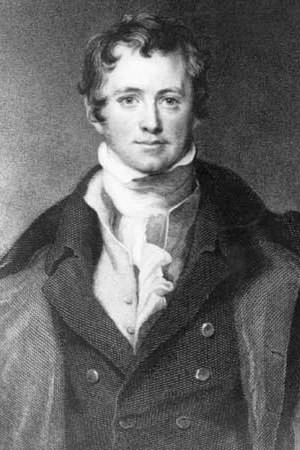
#5 HE NEARLY GAVE UP HIS CAREER DUE TO PREJUDICED TREATMENT
On March 1, 1813, Michael Faraday began work as Chemical Assistant at the Royal Institution. As Humphry Davy’s laboratory assistant, he learned chemistry by the side of one of the greatest practitioners of the day. In late 1813, Davy embarked on a long tour of the continent which lasted for 18 months. Faraday accompanied him as his scientific assistant, met many leading scientists and was exposed to numerous revolutionary ideas. However, as the valet of Davy didn’t wish to go, Faraday was required to be a personal servant to Davy and Davy’s wife, Jane Apreece. Also, Apreece refused to treat Faraday as an equal and made him travel outside the coach and eat with the servants. Faraday was disturbed by this and contemplated giving up his position, but he refrained.
#6 HE HAD A LIFELONG ASSOCIATION WITH THE ROYAL INSTITUTION
Michael Faraday had a long association with the Royal Institution. In 1821, he was promoted to the post of Superintendent of House and Laboratory; in 1825, he became Director of the Royal Institution’s Laboratory; and in 1833, he was made Fullerian Professor of Chemistry, a position to which he was appointed for life without the obligation to deliver lectures. In 1826, Faraday also introduced two innovations at the Royal Institution which continue to this day. One is the Christmas Lectures for Children, and the other is the Friday Evening Discourse (FED), when a scientist explains to the RI members a latest innovation in science.
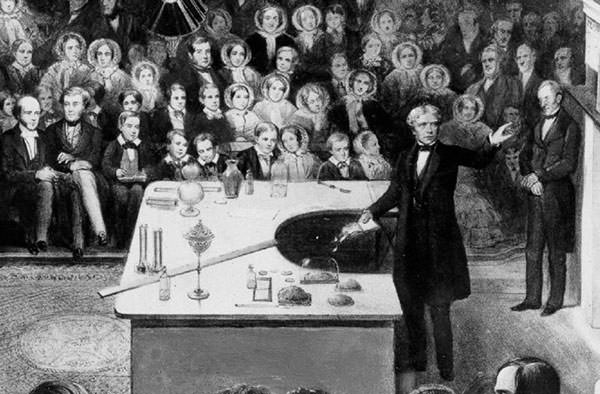
#7 FARADAY WAS A KEY FIGURE IN THE DEVELOPMENT OF ELECTROCHEMISTRY
Michael Faraday achieved his early renown as a chemist. In 1820, he produced the first known compounds made from carbon and chlorine, C2Cl6and C2Cl4. In 1825, he isolated and identified benzene, one of the most important substances in chemistry. Faraday was also the first to liquefy chlorine and ammonia. As ammonia causes cooling when it is evaporated, ammonia liquefaction became the basis on which modern refrigerators and freezers were designed. Faraday’s contribution to chemistry also include his two laws of electrolysis which are vital to our understanding of electrode reactions. Faraday was thus one of the key figures in the development of the science of electrochemistry.

#8 FARADAY IS MOST FAMOUS FOR HIS CONTRIBUTIONS TO ELECTROMAGNETISM
Michael Faraday is most famous for his contribution in physics particularly in the field of electromagnetism. Among his numerous achievements in physics are: invention of the first electric motor and the first electromagnetic generator; discovery of the principles underlying electromagnetic induction and diamagnetism; the Faraday Effect, which provided the first experimental evidence that linked electromagnetism and light; and discovery of the principle of electrostatic shielding to invent the Faraday Cage. Michael Faraday was an excellent experimentalist and one of the most influential scientists in history who laid the foundation for numerous scientific developments later.

#9 HE OFTEN ACTED AS AN EXPERT WITNESS DUE TO HIS SCIENTIFIC KNOWLEDGE
Apart from his scientific work, Faraday undertook many projects for private enterprise and the British government. Due to his reputation, he was often called as an expert witness in legal trials; he was asked to conduct investigations of explosions in coal mines; and he often led projects like construction and operation of light houses. He was active in environmental science and wrote a famous open letter asking authorities to act on the problem of the Great Stink, caused by untreated human waste and industrial effluent on the banks of the River Thames. Faraday died at his house at Hampton Court on August 25, 1867, aged 75. He was buried in the non-Anglican section of Highgate Cemetery in north London. A memorial plaque for Michael Faraday was placed near Isaac Newton’s tomb in Westminster Abbey.
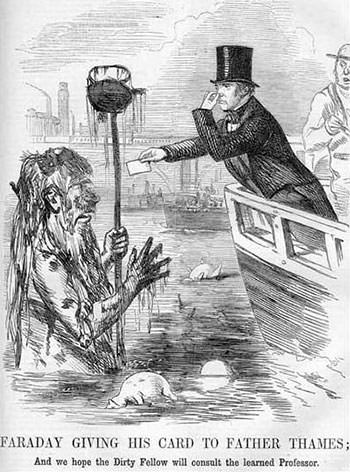
#10 HE WAS A SANDEMANIAN AND WAS DEEPLY RELIGIOUS
Faraday belonged to a small Christian sect, called Sandemanians. Religion provided spiritual sustenance to Faraday throughout his life and had a strong influence on him. Faraday was offered knighthood in recognition of his services to science but he turned it down on religious grounds. He believed it was against the Bible to accumulate riches and pursue worldly reward. Also, he twice refused to become President of the Royal Society. Faraday met his wife Sarah Barnard at the Sandemanian church. Sarah was the daughter of Edward Barnard, who owned one of the largest silversmith companies in London. Michael Faraday and Sarah Barnard married on 12th June 1821 at her parish church of St Faith near St Paul’s Cathedral. The couple had no children. Their marriage is considered successful.
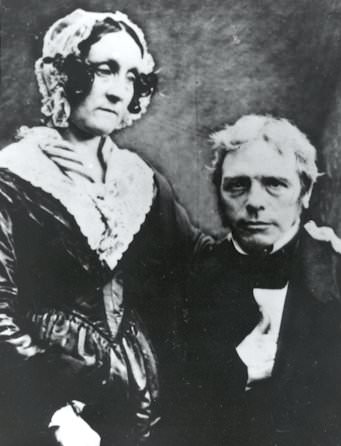
FARADAY IN EINSTEIN’S OFFICE
Albert Einstein, the father of modern physics, regarded Faraday as a personal hero. He kept photos of three scientists in his office for inspiration, those of Isaac Newton, James Clerk Maxwell and Michael Faraday. Another great twentieth century scientist, Ernest Rutherford, said of Faraday, “When we consider the magnitude and extent of his discoveries and their influence on the progress of science and of industry, there is no honour too great to pay to the memory of Faraday, one of the greatest scientific discoverers of all time.”

